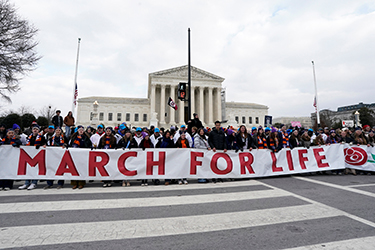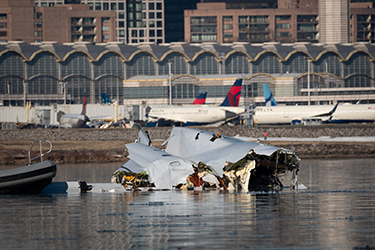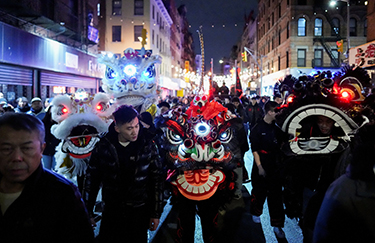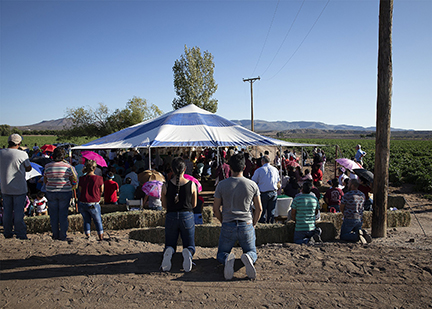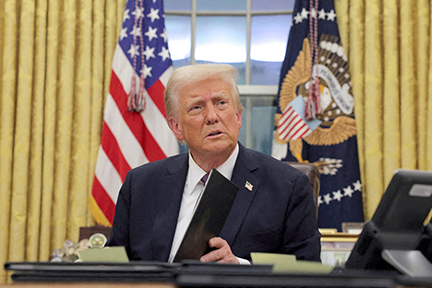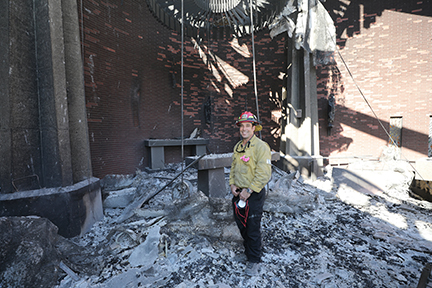By Kate Scanlon
WASHINGTON (OSV News) – The White House Jan. 28 sought to clarify what would and would not be impacted by a directive to freeze federal financial assistance programs and suggested it would seek to strip federal funds from nongovernmental organizations including Catholic Charities as part of its effort to enforce its immigration policies.
Catholic Charities USA urged the Trump administration to reconsider the freeze of the funds in a Jan. 28 statement. A judge temporarily blocked the freeze the same day.
The White House budget office ordered a pause on all federal grants and loans, which could impact trillions of dollars in government spending and halt public programs that affect millions of Americans, according to a memo from that office. These orders could impact Catholic entities that rely on such grants.
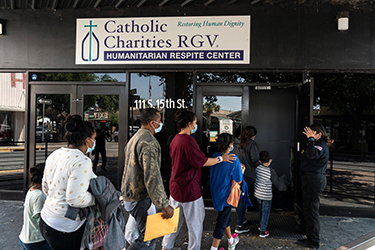
In her debut press briefing as White House press secretary Jan. 28, Karoline Leavitt said “this is not a blanket pause on federal assistance in grant programs from the Trump administration,” arguing “individual assistance” will not be impacted, listing “Social Security benefits, Medicare benefits, food stamps, welfare benefits” as examples.
“It is the responsibility of this president and this administration to be good stewards of taxpayer dollars,” she said, arguing the directive was to combat “wokeness” running afoul of Trump’s other executive orders on topics including diversity, equity and inclusion programs.
But questions remain about how the White House will define “assistance provided directly to individuals,” as indicated in the memo. Illinois and other states were cut off from the portal that is used to request and manage Medicaid spending, the office of that state’s Gov. J.B. Pritzker, a Democrat, said.
The White House confirmed the outage, with Leavitt writing on social media that they are “aware of the Medicaid website portal outage,” but said it would soon be available.
“We have confirmed no payments have been affected – they are still being processed and sent,” she said. “We expect the portal will be back online shortly.”
Leavitt was asked about the impact on organizations like Meals on Wheels, which is funded in part by the Social Services Block Grant (SSBG) program, to deliver meals to homebound seniors, rather than the grant funds going directly to the seniors themselves.
“It does not affect individual assistance that’s going to Americans,” she replied.
Elsewhere in the briefing, Leavitt was asked if Trump “intended to permanently cut off funding to NGOs that are bringing illegal foreign nationals to the country, such as Catholic Charities?”
“I am actually quite certain that the president signed an executive order that did just that,” she said.
Kerry Alys Robinson, president and CEO of Catholic Charities USA, issued a statement that did not reference the exchange in the White House briefing room but defended the work of her organization.
“Last year, 92 percent of the services provided by the 168 independent Catholic Charities agencies around the country covered basic needs – access to food, housing, health care and other necessities – for families and individuals struggling to get by,” Robinson said. “These vital services include food pantries for those who can’t afford groceries, childcare programs for low-income families, meal deliveries for homebound seniors, job training resources for veterans, temporary and permanent housing, mental health services and much more.”
The millions of Americans “who rely on this life-giving support,” she added, “will suffer due to the unprecedented effort to freeze federal aid supporting these programs.”
“The people who will lose access to crucial care are our neighbors and family members,” Robinson said. “They live in every corner of the country and represent all races, religions and political affiliations.”
“For more than a century, the Catholic Charities network has worked with the government to care for poor and vulnerable people in every community in the U.S., and we continue to be eager to work with government to care for our neighbors in need. We strongly urge the administration to rethink this decision,” she continued.
The group also urged its supporters to contact their congressional representatives.
OSV News has reached out to the U.S. Conference of Catholic Bishops and is awaiting a response. Both CCUSA and the USCCB have said they abide by the law in their work with migrants and refugees.
In a Jan. 26 statement, issued hours after Vice President JD Vance questioned the motives of the U.S. bishops’ criticism of President Donald Trump’s new immigration policies in an interview that aired that morning, the USCCB said, “Faithful to the teaching of Jesus Christ, the Catholic Church has a long history of serving refugees.”
“In 1980, the bishops of the United States began partnering with the federal government to carry out this service when Congress created the U.S. Refugee Admissions Program (USRAP),” the statement said. “Every person resettled through USRAP is vetted and approved for the program by the federal government while outside of the United States. In our agreements with the government, the USCCB receives funds to do this work; however, these funds are not sufficient to cover the entire cost of these programs. Nonetheless, this remains a work of mercy and ministry of the church.”
(Kate Scanlon is a national reporter for OSV News covering Washington. Follow her on X @kgscanlon.)

